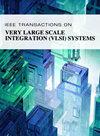A Novel High-Speed Adaptive Duobinary Digital Detector Based on the Feed-Forward Equalizer and the Maximum Likelihood Sequence Detector for Wireline Transceivers
IF 2.8
2区 工程技术
Q2 COMPUTER SCIENCE, HARDWARE & ARCHITECTURE
IEEE Transactions on Very Large Scale Integration (VLSI) Systems
Pub Date : 2025-01-22
DOI:10.1109/TVLSI.2025.3528127
引用次数: 0
Abstract
To solve the high bit error rate (BER) problem of conventional 56-Gb/s nonreturn-to-zero (NRZ) transceivers under high-insertion loss (IL) channels, this study proposes a high-speed adaptive duobinary (DB) digital detector based on the feed-forward equalizer (FFE) and the maximum likelihood sequence detector (MLSD). In this detector, adaptive FFE is combined with channel characteristics to generate DB signals and complete equalization, thus extending the transmission bandwidth and eye height and allowing a larger sampling phase offset. The parallel MLSD is used to complete the detection and decoding of DB signals to reduce the BER. An adaptive algorithm is proposed to avoid the long convergence time of the conventional zero-forcing (ZF) algorithm applied to the DB detector, so that it can be applied to various bit rates and IL channels. In this study, the verification of this DB detector is accomplished at 56 Gb/s. The platform based on a 56-Gb/s analog front-end chip (AFEC) and field-programmable gate array (FPGA) proves that the detector can work well in 12–56 Gb/s and multiple IL channels. The BER was less than 2e-8 at 56 Gb/s on −42-dB channel loss at 28 GHz. The structure can be well used for higher rate transceivers, such as 112 Gb/s.基于前馈均衡器和最大似然序列检测器的有线收发器高速自适应双二进制数字检测器
为了解决传统56 gb /s非归零(NRZ)收发器在高插入损耗(IL)信道下的高误码率(BER)问题,本研究提出了一种基于前馈均衡器(FFE)和最大似然序列检测器(MLSD)的高速自适应双二进制(DB)数字检测器。在该检测器中,自适应FFE与信道特性相结合产生DB信号并完成均衡,从而延长了传输带宽和眼高,并允许更大的采样相位偏移。采用并行MLSD完成DB信号的检测和解码,以降低误码率。针对传统强制零(ZF)算法在DB检测器上收敛时间过长的问题,提出了一种自适应算法,使其能够适用于不同的码率和IL通道。在本研究中,该DB检测器的验证是在56 Gb/s的速度下完成的。基于56 Gb/s模拟前端芯片(AFEC)和现场可编程门阵列(FPGA)的平台证明,探测器可以在12-56 Gb/s和多个IL通道中良好地工作。在- 42-dB信道损耗下,在56 Gb/s下的误码率小于28 GHz。该结构可以很好地用于更高速率的收发器,如112 Gb/s。
本文章由计算机程序翻译,如有差异,请以英文原文为准。
求助全文
约1分钟内获得全文
求助全文
来源期刊
CiteScore
6.40
自引率
7.10%
发文量
187
审稿时长
3.6 months
期刊介绍:
The IEEE Transactions on VLSI Systems is published as a monthly journal under the co-sponsorship of the IEEE Circuits and Systems Society, the IEEE Computer Society, and the IEEE Solid-State Circuits Society.
Design and realization of microelectronic systems using VLSI/ULSI technologies require close collaboration among scientists and engineers in the fields of systems architecture, logic and circuit design, chips and wafer fabrication, packaging, testing and systems applications. Generation of specifications, design and verification must be performed at all abstraction levels, including the system, register-transfer, logic, circuit, transistor and process levels.
To address this critical area through a common forum, the IEEE Transactions on VLSI Systems have been founded. The editorial board, consisting of international experts, invites original papers which emphasize and merit the novel systems integration aspects of microelectronic systems including interactions among systems design and partitioning, logic and memory design, digital and analog circuit design, layout synthesis, CAD tools, chips and wafer fabrication, testing and packaging, and systems level qualification. Thus, the coverage of these Transactions will focus on VLSI/ULSI microelectronic systems integration.

 求助内容:
求助内容: 应助结果提醒方式:
应助结果提醒方式:


